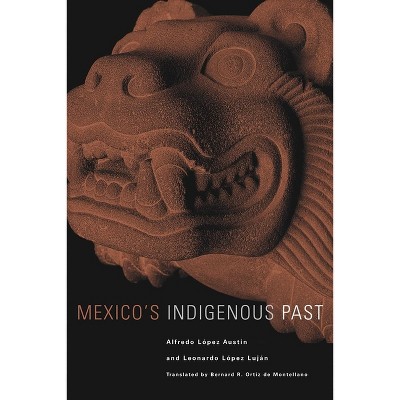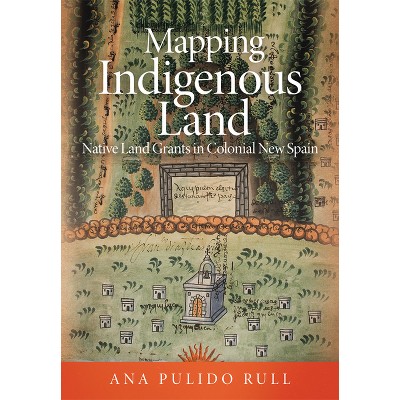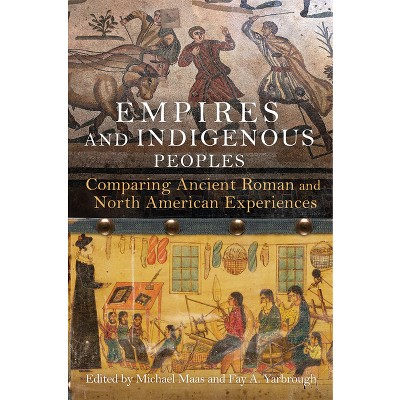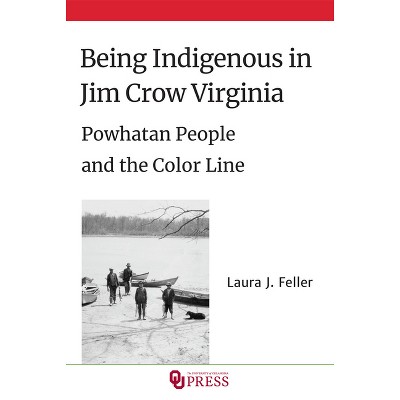Sponsored

Indigenous Borderlands - by Joaquín Rivaya-Martínez
$90.99
In Stock
Eligible for registries and wish lists
Sponsored
About this item
Highlights
- Pervasive myths of European domination and indigenous submission in the Americas receive an overdue corrective in this far-reaching revisionary work.
- Author(s): Joaquín Rivaya-Martínez
- 364 Pages
- History, Latin America
Description
About the Book
Hemispheric in its scope, unique in its approach, this work significantly recasts our understanding of the important roles played by Native agents in constructing indigenous borderlands in the era of European imperialism.Book Synopsis
Pervasive myths of European domination and indigenous submission in the Americas receive an overdue corrective in this far-reaching revisionary work. Despite initial upheavals caused by the European intrusion, Native people often thrived after contact, preserving their sovereignty, territory, and culture and shaping indigenous borderlands across the hemisphere. Borderlands, in this context, are spaces where diverse populations interact, cross-cultural exchanges are frequent and consequential, and no polity or community holds dominion. Within the indigenous borderlands of the Americas, as this volume shows, Native peoples exercised considerable power, often retaining control of the land, and remaining paramount agents of historical transformation after the European incursion. Conversely, European conquest and colonialism were typically slow and incomplete, as the newcomers struggled to assert their authority and implement policies designed to subjugate Native societies and change their beliefs and practices. Indigenous Borderlands covers a wide chronological and geographical span, from the sixteenth-century U.S. South to twentieth-century Bolivia, and gathers leading scholars from the United States and Latin America. Drawing on previously untapped or underutilized primary sources, the original essays in this volume document the resilience and relative success of indigenous communities commonly and wrongly thought to have been subordinated by colonial forces, or even vanished, as well as the persistence of indigenous borderlands within territories claimed by people of European descent. Indeed, numerous indigenous groups remain culturally distinct and politically autonomous. Hemispheric in its scope, unique in its approach, this work significantly recasts our understanding of the important roles played by Native agents in constructing indigenous borderlands in the era of European imperialism. Chapters 5, 6, 8, and 9 are published with generous support from the Americas Research Network.Review Quotes
"The book provides compelling evidence for the "new" Native American history that focuses on Indigenous resilience, resistance, and adaptability rather than the "traditional' assessment that Native Americans were passive victims with limited agency and collapsing autonomy. The authors also make a convincing case on the desirability of and necessity of employing a multidisciplinary approach to amplify Indigenous voices and to throw fresh light on new types of evidence."-- Pacific Historical Review
"Although intended for an academic audience, this provocative volume provides general readers, as well, with a welcome introduction to ongoing scholarship, illuminating the active role of indigenous actors in the colonial history of the Americas."--The Roundup, Western Writers of America
"Hemispheric in its geographic scope, broad in its chronology, and interdisciplinary in its methods, this landmark work immerses readers in diverse indigenous societies, economies, and borderlands from the sixteenth to twentieth centuries. The authors use new sources and approaches to highlight the active role of indigenous peoples living within and beyond the purview of empires and nations across the Western Hemisphere."--Yanna Yannakakis, author of Since Time Immemorial: Native Custom and Law in Colonial Mexico
"This collection of essays by eminent scholars gives us an up-to-the-minute state of the field of Native American studies from a breathtaking continental perspective."--Andrés Reséndez, author of Conquering the Pacific: An Unknown Mariner and the Final Great Voyage of the Age of Discovery
Dimensions (Overall): 9.0 Inches (H) x 6.0 Inches (W) x .94 Inches (D)
Weight: 1.55 Pounds
Suggested Age: 22 Years and Up
Sub-Genre: Latin America
Genre: History
Number of Pages: 364
Publisher: University of Oklahoma Press
Theme: General
Format: Hardcover
Author: Joaquín Rivaya-Martínez
Language: English
Street Date: March 14, 2023
TCIN: 1002953839
UPC: 9780806191836
Item Number (DPCI): 247-25-8405
Origin: Made in the USA or Imported
If the item details aren’t accurate or complete, we want to know about it.
Shipping details
Estimated ship dimensions: 0.94 inches length x 6 inches width x 9 inches height
Estimated ship weight: 1.55 pounds
We regret that this item cannot be shipped to PO Boxes.
This item cannot be shipped to the following locations: American Samoa (see also separate entry under AS), Guam (see also separate entry under GU), Northern Mariana Islands, Puerto Rico (see also separate entry under PR), United States Minor Outlying Islands, Virgin Islands, U.S., APO/FPO
Return details
This item can be returned to any Target store or Target.com.
This item must be returned within 90 days of the date it was purchased in store, shipped, delivered by a Shipt shopper, or made ready for pickup.
See the return policy for complete information.











